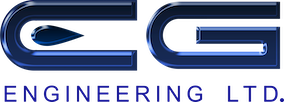Managing Produced Water Under AER’s Directive 51
Managing produced water in compliance with AER Directive 51 is essential for the planning, execution and long term profitability of drilling and well conversions.
Here we take a deep dive into the technical requirements of AER’s Directive 51, including wellbore integrity, operating parameters, fluid types, and disposal costs.
What is AER Directive 51?
Applies to:
AER applicants, approval holders, licensees, operators and permit holders
Purpose:
To ensure hydraulic isolation of stored, injected or disposed fluids and to protect groundwater and energy resources
Pertains to:
Any well used for injection purposes (such as disposal, in situ bitumen recovery, enhanced recovery, hydrocarbon storage, in situ coal conversion, in situ combustion)
Produced water is considered the largest volume by-product within upstream Oil & Gas operations.
The associated costs of managing it play a significant role in the profitability of producing wells, especially as they age.
Wellbore Integrity Requirements
Cementing & Casing Requirements
All potential hydrocarbon bearing zones as well as injection or disposal zones shall be isolated by cement.
All wells drilled or converted for the purpose of injection or disposal shall ensure useable water bearing zones are isolated with the appropriate combination of surface, intermediate, or production casing cemented to surface from a minimum of 25 meters below the lowest useable ground water zone.
Logging Requirements
Cement top location. If the production casing is not cemented to surface, then a cement top log shall be run.
Hydraulic Isolation. Temperature survey as well as cement integrity log must be run to prove injected fluid is being disposed into the licenced zone.
Full length casing inspection log shall be run on any existing well being converted to injection or disposal services. Newly drilled wells are exempt as casing is assumed to have good integrity.
Annual Pressure Test Requirements
Annual packer isolation test to a minimum 1400 kPa for 15 minutes.
Operating Parameters
Wellhead Pressure
Limited to 90 per cent of the formation fracture pressure.
The formation fracture pressure may be determined by Step Rate Injectivity Tests, in-situ stress tests (min frac), or reliable offset fracture/injectivity data.
Step Rate Injectivity Test
Identify an estimated surface or pumping pressure at which you expect formation fracture to occur. A good rule of thumb is 10kPa/m.
Pump a series of injection tests at varying injection rates starting at a low injection rate and increasing until fracture pressure has been identified. A good rule of thumb is to start at 100L/min and increasing 100L/min at a time to 800L/min.
Steps in the injection test must maintain a constant time step size. A good rule of thumb is 30 minutes per step.
A successful Step Rate Injectivity Test can then be clearly plotted to identify fracture will have a minimum of 2 steps above and 2 steps below the fracture pressure.
Mini Frac / DFIT
If the zone being tested will not hold a full column of fluid, bottom hole recorders must be run. If the zone will hold a full column, surface recorders are sufficient.
Approx 10m³ (to be determined by the reservoir analyst), is pumped at a rate that will initiate fracture.
Pressure data from the mini frac can be applied to DFIT which will give the operator data on formation breakdown pressure, closure pressure, relative permeability, and additional information that can be applied to hydraulic fracture models.
Water Disposal Fluid Comparison: Class II vs. Class Ib
As the Western Canadian Sedimentary Basin matures and we see ever increasing activities in deep shale plays, the need to understand and effectively manage produced water and frac flow back effectively continues to increase in importance.
Below is a breakdown on how fluid is classified in Western Canada. We’ve focussed on the 2 most commonly encountered fluid Classes: Class II & Class Ib
Class II: Produced Water or Brine
Produced water associated with the recovery of oil, bitumen, gas, or coalbed methane
Brine from salt cavern or solution mining operations
Water based pigging fluids
Brine associated with EOR
Water containing polymers / chemicals for EOR
Waste fluids from cementing operations
CaCl2 water
Class 1b: Common Oilfield Waste Streams
Saline fluids obtained from waste processing, tank washing, oil spill recovery
Boiler blow down water
Liquid fraction of drilling fluids (excluding diesel inverts)
Spent sweetening agent (spent H2S scavenger)
Amine filter backwash
Neutralized sulphur block run-off
Inorganic salts used in heat exchange medium
Waste fluids from drilling operations
Spent workover or stimulation fluids (frac flow back)
Glycol solutions from dehy operations
Methanol or hydrotest solutions
Acid or alkaline solutions
Gas scrubber or absorption tower bottom liquids
Washing waste water (detergent or soap water)
Corrosion inhibitor solutions
Oxygen scavenger solutions
Disposal Cost Comparison by Geographical Area & Fluid Class
Disposal costs vary depending on the class of fluid and the geographic area you’re operating in.
In turn, accurately estimating fluid disposal costs is critical for accurately forecasting the Operating Costs for production and the Capital Costs for drilling and completion.
Below is a breakdown of costs based on fluid type and geographic area.
Want to print this out? Download PDFs here:
AER's Directive 51: The Basics
AER’s Directive 51: Allowable Fluids
Allowable Fluids Reference Guide
CG Engineering has vast experience providing expertise to both producers and 3rd party water disposal companies.
To learn more about our expertise and how we can help with your project, you can read about our Water Disposal Services and Past Projects.


